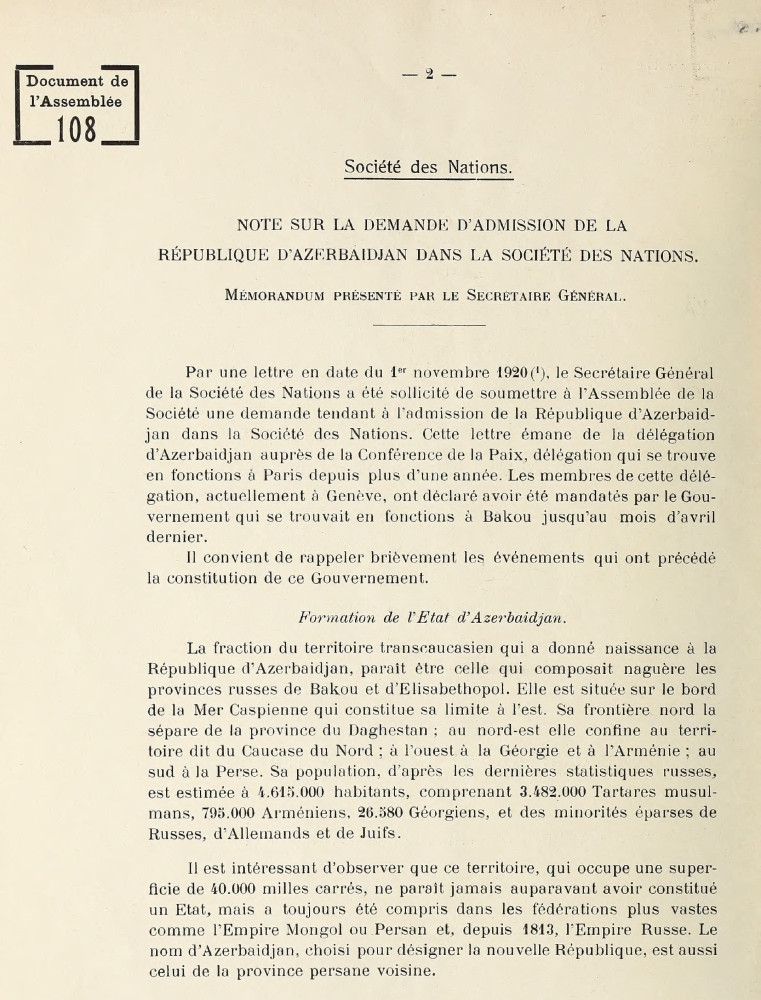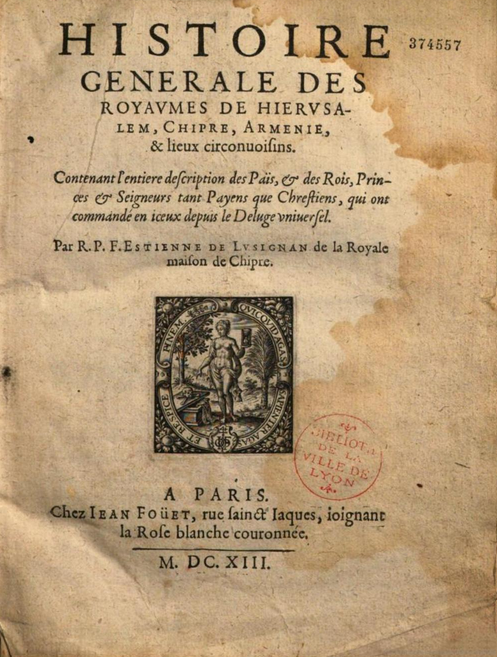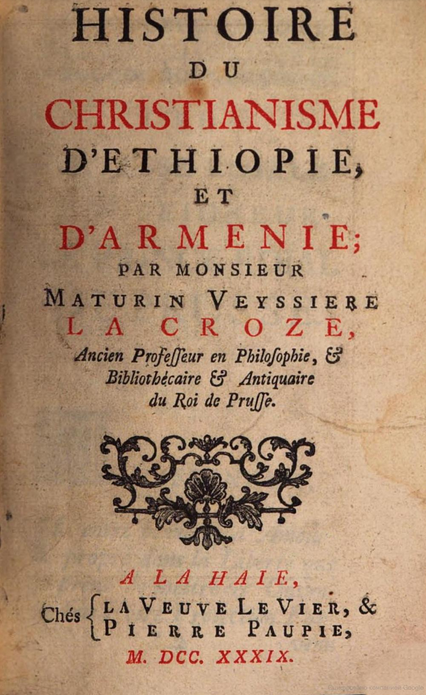2025
2025
2025-11-28

Recently, the Geghard Foundation received a letter of complaint signed by approximately twenty researchers from the A. Bakikhanov Institute of History and Ethnology of the National Academy of Sciences of Azerbaijan. These Azerbaijani “scholars” lodged complaints against the Geghard Foundation, specifically targeting the materials published in the Azerfake and Azervandalism sections of the Foundation’s website. In particular, they focused on the complaint letters sent by the Geghard Foundation to international scientific databases and scholarly journals, which were intended to prevent the dissemination of pseudo-scientific and anti-Armenian publications.
Dear colleagues of the National Academy of Sciences of Azerbaijan,
We hereby present our response to your letter of complaint regarding the activities of the Geghard Scientific and Analytical foundation.
First, the “tone” of your letter can hardly be considered acceptable as the very first paragraph contains an explicit and cynical distortion of the history of Armenia. It is beneath our dignity even to comment on your claim that the present-day “Armenia” emerged on the territories of “Azerbaijani” khanates. Such scholarly groundless and false propaganda material cannot become the subject of academic debate. It suffices to mention that one of those territories, which you refer to as the “Iravan Khanate,” in fact demonstrates the inadequacy of your knowledge of history, geography, and toponymy. Evidently, you have difficulty to comprehend the simple fact that those khanates emerged on the territory of Armenia, and not vice versa.
In response to your statement that you value historical facts and prefer to rely on archival material (although you practice the opposite), we remind you of the well-known decision of the League of Nations regarding Azerbaijan. This document states explicitly that before 1918, no state called “Azerbaijan” existed, and the territories to which they lay claim have never constituted a single, unified political entity. They formed parts of larger empires—the Mongol Empire, later Persia, and, from 1813, the Russian Empire.
Moreover, the same document clearly affirms that the name “Azerbaijan” given to the new republic is borrowed and is in no way different from the name of the neighboring Persian province.
We believe you will have sufficient skills to familiarize yourself with the original text of the League of Nations document that sates “...occupying a superficial area of 40,000 square miles, appears to have never formerly constituted a State, but has always been included in larger groups such as the Mongol or Persian and since 1813, the Russian Empire. The name Azerbaijan which has been chosen for the new Republic is also that of neighboring Persian province.”
«Il est intéressant d'observer que ce territoire, qui occupe une superficie de 40.000 milles carrés, ne paraît jamais auparavant avoir constitué un État, mais a toujours été compris dans les fédérations plus vastes comme l'Empire Mongol ou Persan et, depuis 1813, l'Empire Russe. Le nom d'Azerbaïdjan, choisi pour désigner la nouvelle République, est aussi celui de la province persane voisine»:
This statement fully confirms the historical reality that you consciously and deliberately ignore.
Your statement says: “We, scientists, have brought historical truths to the scientific community...”
First, we urge you refraining from referring to yourselves as scholars and historians. The status of a scholar requires not only the formal possession of publications and academic titles, but also an unwavering adherence to academic ethics. Scholars do not distort history, do not deny well-known facts, and do not engage in manipulating history by selectively picking isolated fragments from sources.
A genuine scholar cannot deliberately ignore historical reality by denying Armenia’s millennia-old heritage, nor can they appropriate Armenian, Albanian, Georgian, and Iranian historical-cultural heritage and declare it “Azerbaijani.” Moreover, scholars typically do not publish materials that contain blatant falsehoods, and certainly do not take pride in such results.
You also claim that you are “writing a real history and bringing it to the scientific community,” and complain that the Geghard Foundation challenges and exposes the databases and journals where you have long been publishing your pseudo-scientific and anti-Armenian texts.
This exposes the true nature of your letter. You are complaining that, in response to the complaint letters from the Geghard Foundation, foreign journals and scholarly databases have begun to take a more cautious approach toward your publications, as a result of which you are deprived of the opportunity to disseminate your anti-Armenian theses.
However, let us explain: such a position is the natural and expected reaction of the academic community, an attempt to protect scholarship and knowledge from devaluation, and to prevent politicized propaganda materials from replacing impartial historical research.
If our actions have in any way limited the further dissemination of your pseudo-historical, propagandistic materials that lack any methodological foundation, we sincerely regret it—regret only that we not undertaken such initiative earlier. Unfortunately, we must note that your situation is indeed difficult, as there will remain less room in the academic environment for the publication and advancement of such falsifications.
From now on, the situation will exacerbate for you. We will be more vigilant and consistent in challenging, publicizing, and promptly preventing any possibility of such practices being repeated.
Academic journals and databases will further receive our letters and complaints, urging them to examine your materials with greater scrutiny and to refrain from publishing them in case they challenge academic integrity and are infused with anti-Armenian content.
Nevertheless, we are ready to assist you. We hope that you will accept it as an expression of goodwill and a sign of our desire to help rectify the situation. Based on the principles of academic ethics, we offer you our support while expecting nothing in return from you.
The offer of assistance and support is the following: from now on, you may send us the drafts of your research. Our impartial specialists will assess your materials and edit, point out methodological inaccuracies, correct factual errors, and provide recommendations to ensure that your future publications meet academic standards. Thanks to this approach, your work can easily comply with international academic norms, be cleared of pseudo-scientific and anti-Armenian propaganda content, and thereafter you will be able to publish it successfully in most academic journals.
However, if you find it impossible to benefit from this offer, then in that case we advise you to at least make minimal efforts to strictly adhere to the norms of academic ethics, refrain from distorting historical facts, and avoid falsifying the historical and cultural heritage of the Armenian people and other neighboring nations.
We assure you that adhering to these principles will increase your chances of being published abroad and will allow you to be genuinely perceived as a scholar or historian by the academic community.
In conclusion, allow us to offer you, the “historians,” a small intellectual exercise. You may need to once again gather all the “historians” who signed the letter of complaint against the Geghard Foundation and perform this exercise together. We strongly encourage you to complete this exercise, as it will help you discover the actual historical facts.
In modern period, that is, in the 17th–18th centuries, when printing began to develop rapidly in Europe, numerous publications and studies dedicated to the “History of the Armenians” appeared.
For example, you can find the History of Jerusalem, Cyprus and Armenia (Histoire générale des royaumes de Hierusalem, Cypre, Arménie et lieux circonvoisins by Étienne de Lusignan), published in 1613, or the 1739 work History of Christianity in Armenia and Ethiopia (Histoire du christianisme d'Éthiopie et d'Arménie) by Maturin Veyssière La Croze, or the 1736 London publication Historiae Armeniacae, a Latin translation of Movses Khorenatsi’s History of the Armenians, and so on.
These and many other examples testify that as early as the early 17th century, when printing was developing in Europe, European presses were publishing scholarly works on the history of Armenia.
Also, note the fact that printed works on the history of Armenia appeared in Europe as early as the beginning of the 17th century—precisely at the time when, according to the sources, your (possible) ancestors had just begun migrating to Armenia, Georgia, Shirvan, and other neighboring regions.
Now, we suggest that you try to find a single study or publication titled “History of Azerbaijan” or “History of the Azerbaijani People” among the 17th–18th-century printed works.
You will be disappointed immediately, as such things do not exist. They do not exist due to logical and scientific realities. It is obvious that during this period, Azerbaijan, as a historical and political entity, did not exist; therefore, there could not have been a historiographical tradition or publication dedicated to its “history.
However, we do not question the right of contemporary Azerbaijani society to develop its own historiography. We urge you to present the new historical conception and the new history of Azerbaijan in accordance with academic standards, avoiding falsifications and treating sources and factual material honestly.
Geghard Scientific and Analytical Foundation, NAS RA
Republic of Armenia, Yerevan, 27 November 2025

League of Nations decision on Azerbaijan, 1920

History of Jerusalem, Cyprus, and Armenia…, Paris, 1613

History of Christianity in Armenia and Ethiopia, 1739

Movses Khorenatsi, History of the Armenians, London, 1736